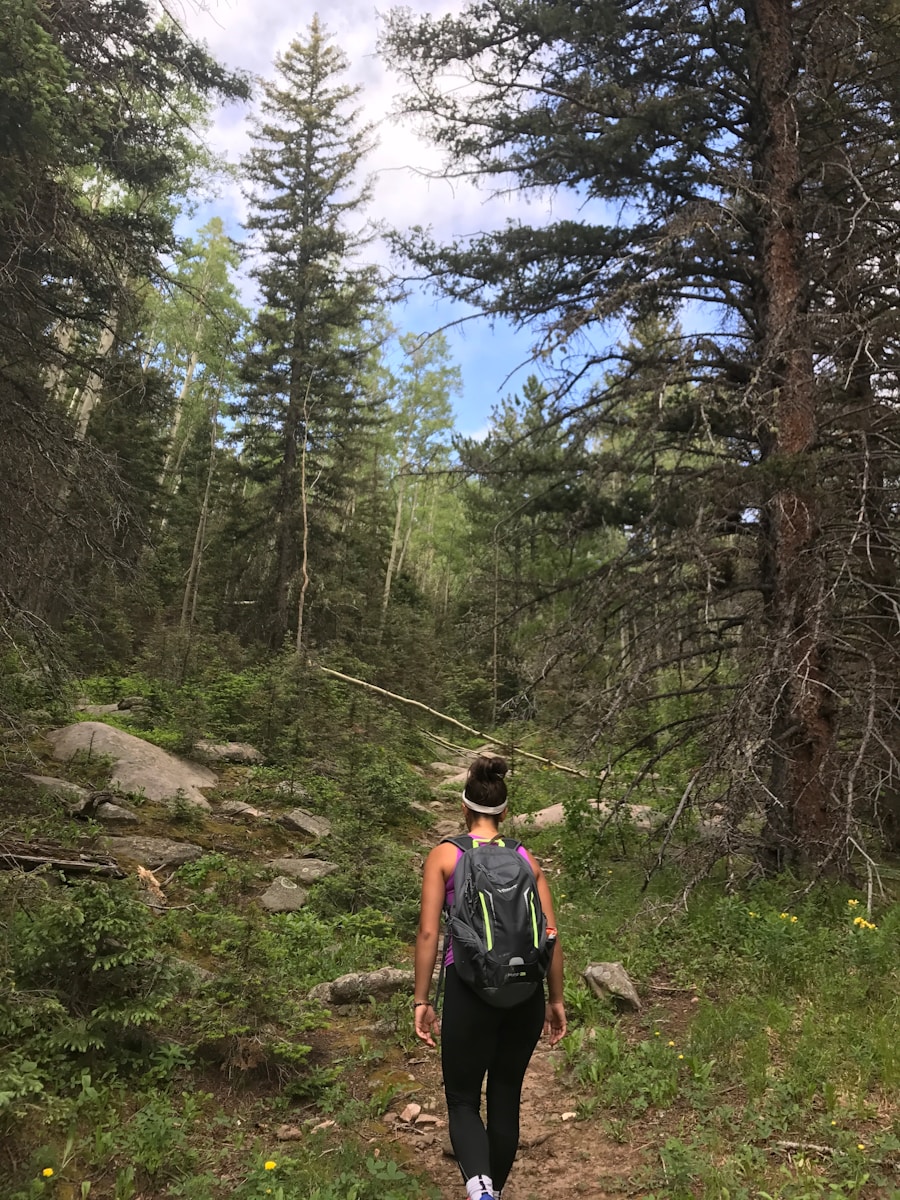Hiking is an exceptional form of exercise that offers numerous benefits for those looking to lose weight. One of the primary advantages of hiking is its ability to burn calories effectively. Depending on the intensity of the hike, a person can burn anywhere from 400 to 700 calories per hour.
This calorie expenditure is influenced by various factors, including body weight, terrain, and pace. For instance, hiking on steep, rugged trails requires more energy than walking on flat surfaces, making it a more efficient workout for weight loss. Additionally, the natural environment can enhance the experience, making it easier to engage in longer sessions without the monotony often associated with indoor workouts.
Beyond calorie burning, hiking also promotes cardiovascular health. As a weight-bearing exercise, it strengthens the heart and lungs, improving overall endurance. This increased cardiovascular fitness not only aids in weight loss but also enhances daily activities and overall quality of life.
Furthermore, hiking can lead to improved mental health. The combination of physical activity and exposure to nature has been shown to reduce stress, anxiety, and depression. This psychological benefit can be crucial for individuals on a weight loss journey, as emotional well-being plays a significant role in maintaining motivation and adherence to fitness goals.
Key Takeaways
- Hiking can aid in weight loss by burning calories, increasing metabolism, and reducing stress.
- Start hiking for weight loss by choosing the right gear, setting realistic goals, and gradually increasing intensity.
- Look for hiking trails with varied terrain, inclines, and distances to maximize weight loss benefits.
- To maximize weight loss while hiking, maintain a brisk pace, stay hydrated, and incorporate strength training exercises.
- Incorporate interval training into your hiking routine by alternating between periods of high intensity and lower intensity.
How to Get Started with Hiking for Weight Loss
Assessing Your Fitness Level
If you are new to exercise or have been inactive for a while, starting with shorter, easier trails is advisable. Gradually increasing the difficulty and duration of your hikes will help build stamina and confidence. Many local parks and nature reserves offer beginner-friendly trails that are well-marked and safe for novice hikers.
Equipping Yourself for Hiking
Comfortable footwear is paramount; investing in a good pair of hiking boots or shoes can prevent blisters and provide necessary support. Additionally, wearing moisture-wicking clothing can enhance comfort during hikes, especially in varying weather conditions. Carrying essential items such as water, snacks, a map or GPS device, and a first-aid kit will ensure you are prepared for your outdoor adventures.
Keeping Your Routine Fresh
As you become more accustomed to hiking, consider exploring different terrains and locations to keep your routine fresh and engaging.
The Best Hiking Trails for Weight Loss

When selecting hiking trails for weight loss, it’s beneficial to choose routes that offer a combination of elevation gain and varied terrain. Trails that include hills or inclines can significantly increase the intensity of your workout, leading to greater calorie burn. For example, the Appalachian Trail features numerous sections with challenging elevations that can provide an excellent workout while immersing you in stunning natural scenery.
In addition to elevation, consider trails that incorporate diverse landscapes such as forests, lakes, or mountains. The Pacific Crest Trail is renowned for its breathtaking views and varied ecosystems, making it an ideal choice for those looking to combine weight loss with an appreciation for nature. Local state parks often have hidden gems that may not be as well-known but can offer equally rewarding experiences.
Researching local hiking groups or online forums can help you discover trails that are popular among hikers focused on fitness.
Tips for Maximizing Weight Loss while Hiking
| Tip | Description |
|---|---|
| Choose the right trail | Select a trail with varying terrain and elevation to maximize calorie burn and muscle engagement. |
| Stay hydrated | Drink plenty of water before, during, and after your hike to support metabolism and prevent dehydration. |
| Bring healthy snacks | Pack nutrient-dense snacks like nuts, fruits, and protein bars to fuel your body and maintain energy levels. |
| Use trekking poles | Utilize trekking poles to engage upper body muscles and increase calorie burn while providing stability on uneven terrain. |
| Interval training | Incorporate intervals of high-intensity hiking followed by periods of recovery to boost metabolism and burn more calories. |
To maximize weight loss while hiking, it’s essential to maintain a consistent pace that elevates your heart rate into the fat-burning zone. This typically means hiking at a moderate intensity where you can still hold a conversation but feel slightly out of breath. Incorporating intervals into your hikes—alternating between periods of brisk walking and slower recovery—can further enhance calorie burn and improve cardiovascular fitness.
Another effective strategy is to add weight to your hike by using a backpack filled with water bottles or other items. This added resistance increases the intensity of your workout without requiring you to hike on steeper terrain. Additionally, consider incorporating bodyweight exercises during breaks in your hike, such as squats or lunges, which can help build muscle and boost metabolism.
Staying hydrated is also crucial; drinking water before, during, and after your hike helps maintain energy levels and supports overall performance.
Incorporating Interval Training into Your Hiking Workout
Interval training is a powerful method for enhancing the effectiveness of your hiking workouts. By alternating between high-intensity bursts of activity and lower-intensity recovery periods, you can significantly increase calorie expenditure during your hikes. For instance, you might hike briskly uphill for two minutes followed by a slower pace for three minutes on the flat or downhill sections.
This approach not only boosts calorie burn but also improves cardiovascular fitness and endurance. To implement interval training effectively, it’s essential to listen to your body and adjust the intensity based on your fitness level. Beginners may start with shorter intervals and gradually increase their duration as they become more comfortable with the demands of the workout.
Using a fitness tracker or smartphone app can help monitor heart rate and ensure you are working within your target zones. Additionally, varying the intervals based on terrain—such as increasing intensity on uphill sections—can keep your workouts engaging and challenging.
The Importance of Proper Nutrition for Hiking and Weight Loss

Nutrition plays a pivotal role in supporting weight loss efforts while hiking. Consuming a balanced diet rich in whole foods—such as fruits, vegetables, lean proteins, whole grains, and healthy fats—provides the necessary fuel for your hikes. Prior to hitting the trails, it’s beneficial to eat a meal or snack that includes carbohydrates for energy and protein for muscle repair.
Foods like oatmeal with fruit or a whole-grain sandwich with lean turkey are excellent pre-hike options. During hikes, especially those lasting longer than an hour, it’s crucial to replenish energy levels with snacks that are easy to carry and digest. Trail mix containing nuts, seeds, and dried fruits offers a good balance of carbohydrates and healthy fats.
Energy bars specifically designed for endurance activities can also be convenient options. Post-hike nutrition is equally important; consuming a meal rich in protein within 30 minutes after completing your hike aids in muscle recovery and helps replenish glycogen stores.
Avoiding Common Mistakes while Hiking for Weight Loss
While hiking can be an effective way to lose weight, there are common pitfalls that individuals should be aware of to maximize their success. One frequent mistake is underestimating the importance of hydration. Many hikers neglect to drink enough water before or during their hikes, which can lead to fatigue and decreased performance.
Carrying an adequate supply of water is essential; a general guideline is to drink about half a liter per hour of moderate activity. Another common error is overindulging after hikes due to increased hunger from physical exertion. It’s easy to justify high-calorie snacks or meals after a long hike; however, being mindful of portion sizes is crucial for weight loss goals.
Instead of treating yourself with calorie-dense foods post-hike, opt for nutritious options that will aid recovery without derailing your progress. Additionally, failing to track progress can hinder motivation; keeping a journal or using an app to log hikes can help maintain accountability and encourage consistency.
How to Stay Motivated and Consistent with Your Hiking Weight Loss Routine
Staying motivated on your hiking journey requires setting realistic goals and celebrating small achievements along the way. Establishing specific targets—such as completing a certain number of hikes each month or reaching new trail milestones—can provide direction and purpose. Joining local hiking groups or clubs can also foster a sense of community and accountability; sharing experiences with others who have similar goals can be incredibly motivating.
Incorporating variety into your hiking routine is another effective strategy for maintaining interest and enthusiasm. Exploring new trails or participating in organized hikes can keep things fresh and exciting. Additionally, documenting your hikes through photos or social media can serve as both motivation and inspiration for others on similar journeys.
Finally, remember that consistency is key; even short hikes can contribute significantly to overall fitness when done regularly. Embracing the process rather than focusing solely on outcomes will help sustain motivation over time as you work towards your weight loss goals through hiking.
If you’re looking to shed some pounds while enjoying the great outdoors, hiking is a fantastic way to do so. Not only does it provide a challenging workout, but it also allows you to connect with nature and explore new trails. To make the most of your hiking experience, it’s essential to have the right gear, including a reliable pair of waterproof sneakers. Check out this article on 5 Must-Have Waterproof Sneakers for Your Spring 2025 Travels for some recommendations on the best footwear for your hiking adventures. Additionally, don’t forget to pack a solar-powered camping lantern and a durable hiking backpack for multi-day treks. Visit this article and this article for more information on these essential hiking accessories.
FAQs
What is hiking?
Hiking is a form of outdoor physical activity that involves walking on trails or paths in natural environments such as forests, mountains, and parks.
Can you lose weight by hiking?
Yes, hiking can be an effective way to lose weight. It is a form of cardiovascular exercise that can help burn calories and improve overall fitness.
How many calories can you burn while hiking?
The number of calories burned while hiking depends on various factors such as the intensity of the hike, the terrain, and the individual’s weight. On average, a person can burn between 400-700 calories per hour while hiking.
What are the benefits of hiking for weight loss?
Hiking offers several benefits for weight loss, including burning calories, improving cardiovascular health, building muscle strength, and reducing stress.
How often should you hike to lose weight?
The frequency of hiking for weight loss can vary depending on individual goals and fitness levels. It is recommended to engage in moderate to vigorous intensity hiking for at least 150 minutes per week for overall health benefits, including weight loss.
Are there any tips for maximizing weight loss while hiking?
To maximize weight loss while hiking, it is important to maintain a consistent pace, choose challenging terrains, carry a backpack for added resistance, and stay hydrated. Additionally, incorporating interval training and uphill climbs can help increase calorie burn.
